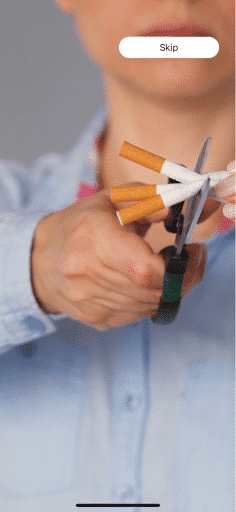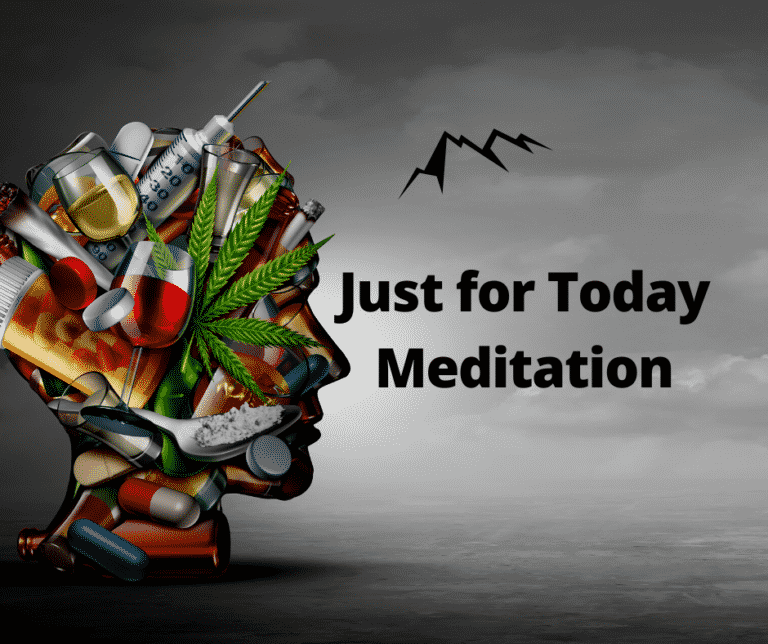Practice Gratitude: A 30 Days How-To Guide
Published on March 5, 2020 – Last Updated on March 29, 2022
When you are going through a difficult time, gratitude is the last thing you think of. Being grateful, however, is one of the keys to being happy. Happiness is ultimately what everyone seeks.
There’s more to gratitude than being thankful for than getting the things you want out of life. You may even have everything you want, but you are still unhappy. So let’s explore gratitude, how it can improve your life, and how you can start practicing gratitude every day.
What is Gratitude?

According to the dictionary, gratitude is the state of being grateful or thankful. The word gratitude has roots in the Latin word gratia, which means grace, gratefulness, or graciousness. How you interpret gratia depends on the context, but gratitude encompasses all of these things.
When we think of gratitude, we believe in acknowledging the things we are thankful for in our lives.
Gratitude is not only being grateful for the things in your life but being grateful for the gifts the universe or your higher power has given you.
What that means is that there are many things to be grateful for. It takes mindfulness to be aware of what’s going on around you and notice the little things.
For instance, when you go for a walk, notice the cool breeze brushing against your face. Notice the sky; is it gray or bright blue? Are there clouds? Do you hear the birds singing? Are they flying or on the ground foraging for food?
Mindfulness allows you to be grateful for the little things that you notice. It has nothing to do with what you have or what you do.
You are grateful for the long deep breath you take during meditation or the heavy rainfall because it replenishes the earth.
You are thankful for the good that happens in your life.
Why You Should Practice Gratitude

The benefits of gratitude can go well beyond the initial feeling. Studies are showing that gratitude has a connection with your sense of well-being.
Through studies, science is starting to understand the relationship between the brain and gratitude. However, results can vary, partially due to the different levels of gratefulness everyone tends to feel.
Researchers have found that gratitude that results from gifts falls into two criteria. First, does the person perceive the gift as a genuine effort from the giver, and second, does the recipient find the gift valuable, and does it fulfill a need?
The upside of being grateful
In other words, gifts are valued by the genuineness of the present and its worth to the receiver.
UCLA’s Mindfulness Awareness Research Center has found that when you regularly express gratitude, it changes the brain’s molecular structure (literally).
In one study, the researchers looked at the brain concerning moral sentiments. They found through MRIs that those who had feelings of gratitude tended to have more grey matter in the critical areas of the brain that react to moral sentiment or pleasure.
When feelings of gratitude are expressed and received, the brain releases dopamine and serotonin, the two neurotransmitters responsible for making us feel good. So when you consciously practice gratitude, it can change your neural pathways, and you have a permanent feeling of happiness and positivity.
Practicing gratitude is not only good for your mind, but it’s also good for your body. Researchers at the National Institute for Health (NIH) found that gratitude triggers higher activity levels in the hypothalamus. The hypothalamus is responsible for many essential body functions, including body temperature, thirst, fatigue, and sleep, and plays a significant role in metabolism and stress.
This is significant because the relationship between the body and the brain becomes clearer. As a result, what you think and feel may have a lot to do with your physical health.
Gratitude is a significant component of happiness.
How to Practice Gratitude

There are many ways that you can practice gratitude. You can begin by reflecting on the things that life has given you.
- Your baby’s laughter
- The sound of the waves crashing on the beach
- The food you prepare for your family, view our article on mindful eating
- The roof that you live under
- The job that pays your bills
- The inspiring message you hear at church
- Your best friend
- Your family
Here are some ways to continue practicing gratitude:
Gratitude Journal
One of the most common ways to start a gratitude practice is to keep a gratitude journal. In a 2003 study by Emmons & McCullough, the researchers found that participants who kept a journal reflecting their gratitude not only exercised more, they were optimistic and felt better about their lives in general. All you need is a notebook and a pen!
Acts of Kindness
Honda recognizes this by running the “Random acts of helpfulness” campaign. Their commercials consist of Honda employees helping someone get something they need (like a new air conditioner).
You, of course, don’t have to go that far, but you can incorporate an act of kindness into each day by:
- Giving someone a hug when they are feeling down
- Saying hi to someone you’ve never talked to before
- Open the door for someone older
- Help a homeless person with a meal
There are many small things you can do as an act of kindness if you look for them. They don’t have to be huge or expensive. Little things count.
Smile More Often
Never underestimate the power of a smile. A smile can not only be contagious, but it makes you and the person you smile at feel good. You don’t even have to know the person you are smiling at. So, go ahead, make a stranger’s day!
Volunteer
Volunteer for an organization that helps people. Not only will you be helping the organization and those who depend on it, but you will also be helping yourself. When you talk to people who may not have it as fortunate as you do, you learn to appreciate what you have. You also learn to admire the people you are helping because they have a positive attitude despite their adversities.
Give People Recognition
When you’re at work, and someone does a good job, let them know it. You are not only giving them praise, but you are validating the excellent work they did.
Think of Others
Think about the people who serve you each day, such as a sales clerk, a bus driver, a waitress, or a gas station attendant. Don’t forget to thank them or tell them they are doing excellent.
Look at the Positive Side of Challenges
We all have challenges in our life—unfortunately, most of the time, we choose to see them negatively. Look back at your challenges and examine how they created positive changes in your life by making you the person you are today. Then you can be grateful for those challenges.
Express your Gratitude

Tell someone you care about how grateful you are to have them in your life. In the Science of Happiness, Experiment participants were asked to write a letter calling a loved one and express their gratitude to the person.
Those who wrote a letter increased their happiness level between 2-4%. Those who made an actual phone call to the person we’re thinking of expanding their happiness level between 4-19%!
Practicing Gratitude During the Holidays
Gratitude doesn’t just have to be limited to one day or one month. It can be practiced every day.
Some of the tips listed above, like giving out treats, helping someone get something they need, and smiling at people, can also be done around holiday time. So if you are struggling with making gratitude a part of your life, maybe try it this month (November).
Try writing in your gratitude journal about how thankful you are for your family and friends on Thanksgiving Day by using phrases like: “I am thankful for _________ because _________.” Or “I am thankful that __________ happened because _______.” You could even include pictures and postcards from years past to make of gratitude.
Write words on the sidewalk or in public places that focus on gratitude. You can also post pictures of things you are grateful for. Here is an example: “I’m thankful for my life because ___________.”
Thankful Table
Instead of talking about what you are thankful for at your Thanksgiving dinner, why not have a table where people get to write down what they are thankful for? That way, no one person dominates the conversation, and everyone gets the chance to express their gratitude.
There are many ways to practice gratitude during this month of giving thanks! Remember, it doesn’t always have to be formal, and saying thank you makes all parties feel.
Gratitude Symbol
A gratitude symbol is :
- an object that symbolizes gratitude.
- a mental attitude by which one acknowledges the goodness of another; appreciation.
- an expression of appreciation, thanks, or acknowledgment.
An example is when you say thank you to someone for doing something good for you. The most common way to show gratitude is by saying “Thank You” in various forms like: “I appreciate what you did for me,” “You have been so kind to me,” and other kinds of acknowledgments.
Gratitude goes beyond just not being ungrateful or disrespectful to others. Gratitude also has a benefit on your health and happiness. Here are a couple of excellent practices that will help you achieve more gratitude and joy in your life:
- capturing moments of gratitude
- establishing a habit of thinking about what we appreciate
- noticing our intuition and acting on it
- getting back in touch with our senses and using them to see things we normally don’t (smelling, tasting, hearing, and touching).
30 Days of Gratitude
To be grateful for what you have, you have to express it daily, becoming a new healthy habit for you. Expressing gratitude daily can change your life in many ways.
Every day, before you do anything else, make sure you express gratitude.
Even if it’s hard to find things to be grateful about, try it out, and with time you’ll start seeing energy shifts in your favor!
– Be grateful when you are healthy
– Or for being alive
– For everything in your life that ever made you happy, including the things that have changed over time.
– Be grateful for being you
– Being around people who care about you
– For your family, friends, and all the important people to you. They are one of GOD’s greatest gifts. So always remember to show gratitude when they are present.
– Be grateful for everything in your life, including material things or simple pleasures like cuddling with your pet. Expressing gratitude for these daily experiences will open up so many doors in life! It’s easier to see opportunities when you look at the positive side instead of focusing on what is missing from your life. You tend to attract what you put out into the universe, which means that if you feel poor, then chances are more negative thoughts about money will continue to come.
– Be grateful for your mistakes and failures because they are a great learning experience that can help guide you towards success on another path.
– When the going gets tough, be grateful for all the times things have been challenging in your life as this is what makes you stronger. It’s often those moments when we’ve faced adversity that make us stronger as people by teaching us valuable lessons about how to handle complex situations better next time around!
The 30 days of gratitude challenge will not only change your life but will also brighten up everyone else’s day too. Every day, share something for which you’re grateful with a friend or a loved one.
Gratitude Meditation & Mindfulness

We spend a great deal of time thinking about the past and the future. Mindfulness teaches you to think about the here and now. We talked briefly about how mindfulness allows you to be grateful. Here is a perfect way to express mindfulness and gratitude by infusing them into your meditation practice to get into the habit of gratitude.
Sit quietly and think about at least five things you are grateful for. Then, as you think of each one, picture it in your mind. Doing this every day helps to rewire your brain to be more positive.
Learning to practice gratitude can be life-changing. Not only do you learn to appreciate the things you took for granted before, but you also enhance your happiness and the feeling of well-being.
This is partly due to the fact that your brain changes the more you practice gratitude. Gratitude allows you to break free of selfishness.
Being grateful does not mean you have to receive presents to be happy. On the contrary, the art of gratitude is about appreciating all the little things that life has to offer and passing that gratitude on to others.
“Gratitude is the key to a happy life that we possess in our hands since if we are not grateful, no matter how much we have, we will not be content — because we will always want to acquire something new or different.” ~ Br. David Steindl-Rast
Our mindfulness app can help you get where you need to be in your meditation practice. There are hundreds of meditations that can help with stress, anxiety, and self-help. If you would like to begin to practice gratitude and live a more positive lifestyle, you can download Mind Tastik in the Apple App Store or Google Play.
Conclusion on Practising Gratitude:
It turns out that there are some simple steps we can take to improve our outlook on life without too much effort or time commitment involved at all! This blog post discusses ways you might want to consider practicing gratitude so your brain will rewire itself for positivity and success.
Saying thank you makes the person receiving your gratitude feel good, which helps them become more optimistic about their life. By making other people happy, you are spreading positivity in the world, which will also positively affect your life. So be grateful for that!




